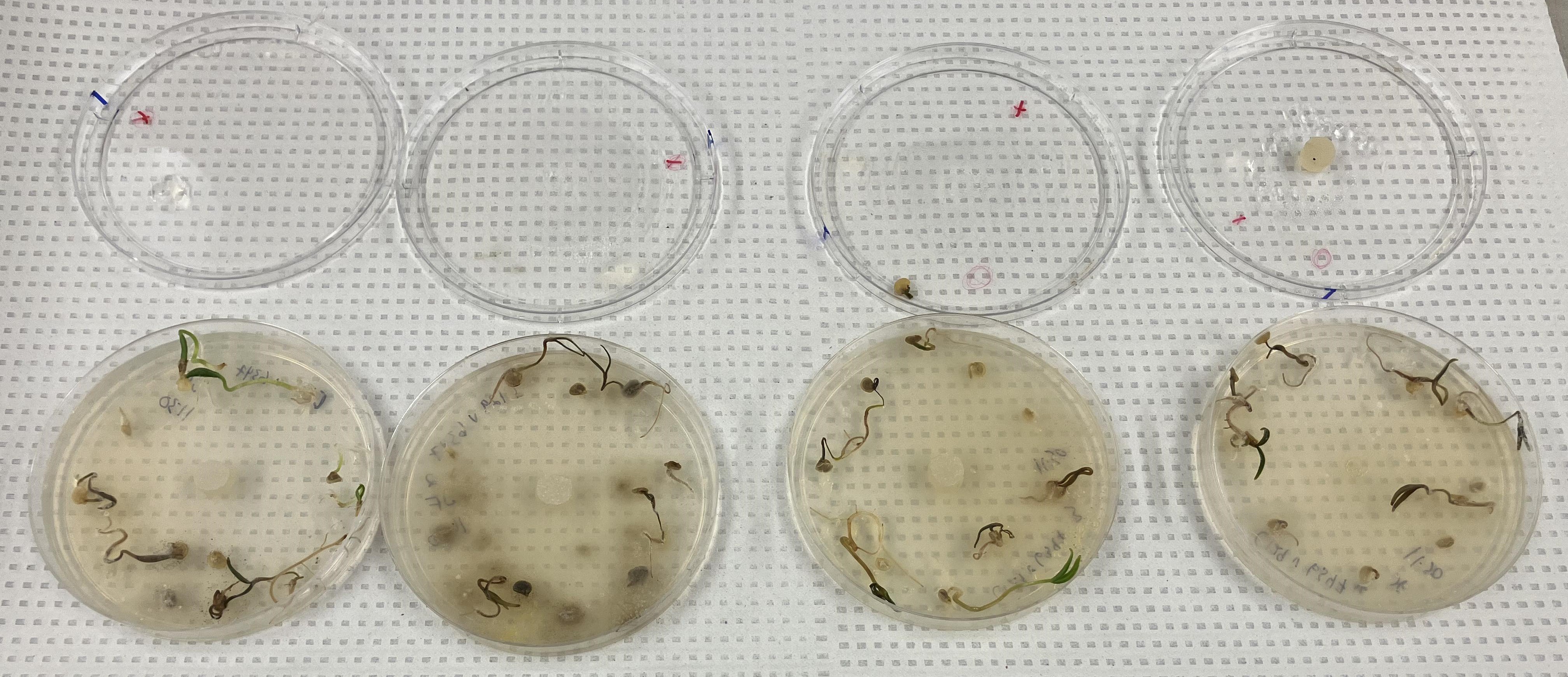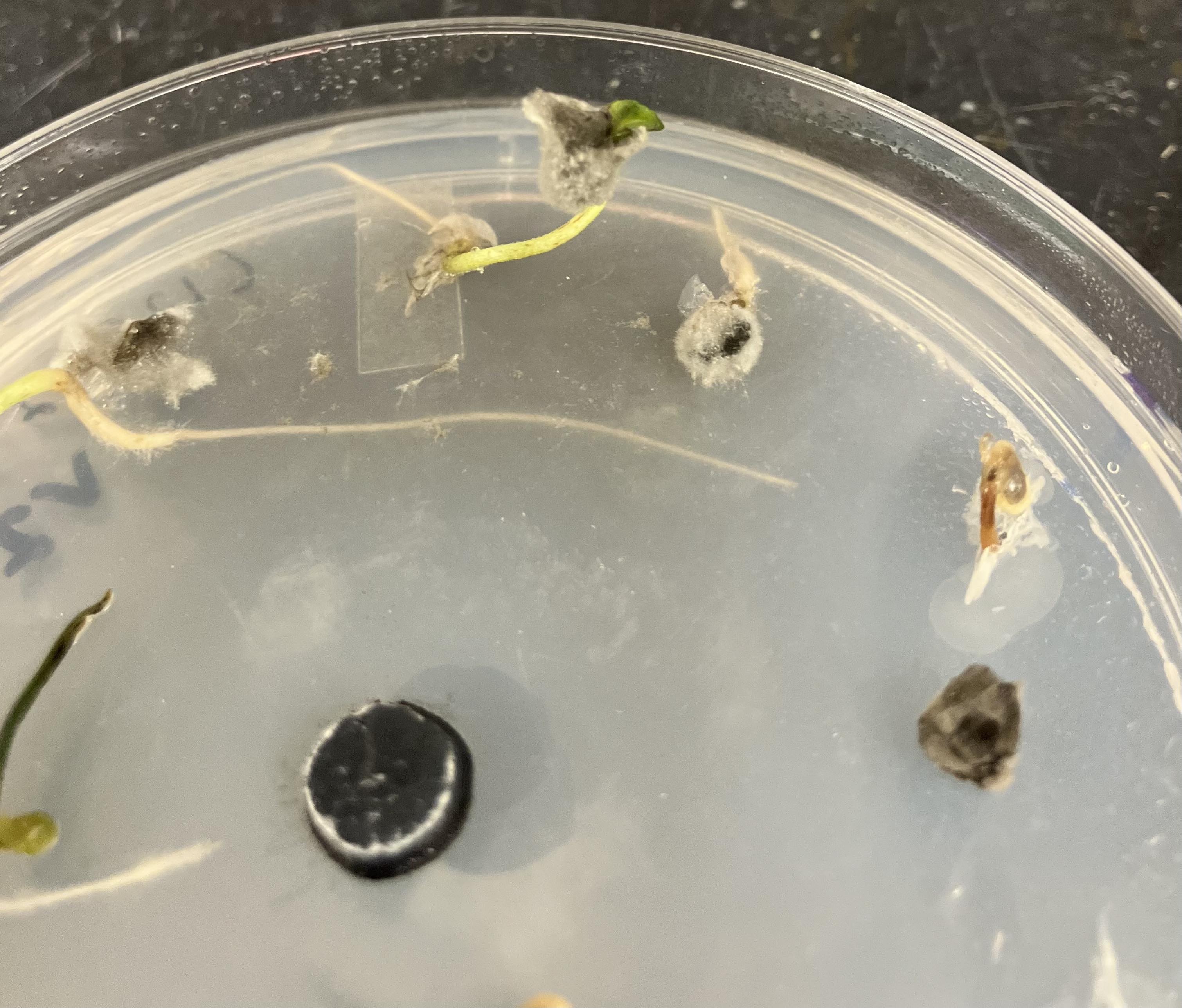Texas A&M Varieties
Chile peppers (Capsicum annuum) are ravished by various diseases and environmental stresses throughout the course of their lifetime and growing seasons. These diseases and stresses can range from biotic (living) and abiotic (non-living factors), or can be a combination of both, with one having the potential to influence the other (for example, root-knot nematode interfering with plant nutrient uptake). It is for this reason that Dr. Kevin Crosby, a researcher and professor at Texas A&M College of Agriculture and Life Sciences, has been meticulously working on breeding of advanced chile varieties with the primary goal of stress and disease resistance. Shown below are some of the studies conducted as a collaborative project between NMSU and Texas A&M AgriLife, as well as comparative differences between the various varieties of chile peppers.

Many other varieties have been bred with the same major goal in mind - to produce chile pepper plants resistant to various stresses and diseases. In this trial, we have tested the resistance/tolerance of various Texas A&M bred varieties against an ongoing pathogen that is a nuisance to chile farmers, Phytophthora capsici. This pathogen is known to cause stem necrosis (death), defoliation (the loss of leaves), wilting, and ultimately, whole plant death. The above results show no resistance to P. capsici in a majority of the varieties grown. However, out of all the germinated varieties, CS1 Fidel, showed no disease incidence, indicating that this may be a promising variety for phytophthora resistance.
Note: DAI refers to "Days after Inoculation"

Above: Lab trials are underway to evaluate any resistance or tolerance among Texas A&M advanced varieties. The example in this photo is variety C129 and, as shown, there is no resistance or tolerance to Phytophthora capsici.
Texas A&M Advanced Varieties vs Verticillium Wilt
One of the major pathogens plaguing the southwest chile pepper production is a wilt disease known as verticillium wilt (with the causal agent being Verticillium dahliae). Symptoms of this pathogen include yellowing of lower leaves and sudden wilt, resulting in death. Current research in our lab includes field, microplot, lab, and greenhouse trials to determine the resistance or tolerance of Texas A&M varieties to this pathogen.
Lab Trials
Lab trials of verticillium wilt were conducted using water agar plates and four Texas A&M chile pepper varieties. These four varieties were C127, C129, C130, and C188. A mycelium plug of pure V. dahliae culture was placed in the center of the water agar plate and allowed to grow until the mycelium reached the edges of the plate. The four Texas A&M varieties were then surface sterilized using ethanol (EtOH), 10% bleach, and deionized (DI) water, dried using paper towels to limit bacterial contamination, and then placed around the circumference of the plate. Ten seeds were used per plate and each plate was replicated four times. Results were recorded once symptoms were shown on the seeds or seedlings.


Above (left): V. dahliae is observed growing on the chile seeds and seedlings
Above (right): The water agar plates set-up with the pathogen (V. dahliae) and the Texas A&M chile varieties
Growing chile seeds on water agar plates in the laboratory gives a clear picture of the interaction between the plants and the pathogen. Due to the controlled and sterile environment the laboratory provides, variables such as outside factors influencing plant-pathogen interactions are able to be eliminated or reduced.